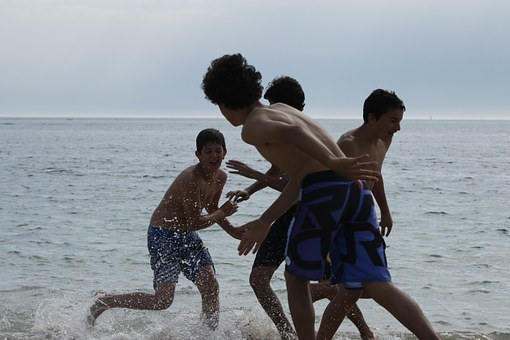Child Labour

Child Labour
Child LabourChild labour is the employment of children under an age determined by law or custom. This practice is considered exploitative by many countries and international organizations. Child Labour was not seen as a problem throughout most of history, only becoming a disputed issue with the beginning of universal schooling and the concepts of workers' and children's rights.
Child Labour can be factory work, mining or quarrying, agriculture, helping in the parents' business, having one's own small business (for example selling food), or doing odd jobs. Some children work as guides for tourists, sometimes combined with bringing in business for shops and restaurants (where they may also work as waiters). Other children are forced to do tedious and repetitive jobs such as assembling boxes or polishing shoes. However, rather than in factories and sweatshops, most child labor occurs in the informal sector, "selling on the street, at work in agriculture or hidden away in houses - far from the reach of official labor inspectors and from media scrutiny."
In 2008 there were 215 million children working illegally in the eyes of international law, almost 14% of all the world's children under 18. This includes 115 million children under that age engaged in "hazardous work" which could threaten their safety or health. such as handling chemicals, heavy loads or enduring long hours.
The remaining 100 million child labourers are those aged under 15 - the international minimum age for legal employment whose tasks are not hazardous but are more substantial than "permitted light work."
Almost all child labour occurs in developing countries, with about 60% engaged in agriculture. Other occupations include domestic service, factory production and backstreet workshops.
The darkest category of child labour relates to those children caught up in criminal activities such as prostitution, military enrolment, slavery (such as bonded labour), or trafficking (which involves the removal of a child from its home, often involving deception and payment, for a wide range of exploitative purposes).
These activities are beyond the reach of statistical surveys but the numbers are likely to be over 10 million. Together with hazardous work, they are described as the "worst forms of child labour."
The small decline in the overall incidence of child labour in the four-year reporting period to 2008 is inconclusive and disappointing. The most significant change is a 31% drop in hazardous work for children aged 14 and under, but this is countered by a 20% rise amongst the 15-17 age group. Figures are gender-sensitive for the first time and suggest that child labour amongst girls fell by 15% over the four years.
The accuracy of this child labour data is improving but is based on national surveys conducted over the period 2005-2008. The impact of the recent global economic crisis on poor households is therefore not yet reflected in the figures. It is no surprise that the Global Report 2010 warns the international community that "we will not get there with a business-as-usual approach (to child labour)."
Child labour continues to exist throughout the world. Children work because their survival and that of their families depend on it, and in some cases, because unscrupulous adults take advantage of their vulnerability. Child Labour is also due to weaknesses in education systems and is deeply rooted in cultural and social attitudes and traditions. The problem is further compounded by the fact that child labour remains hidden from public view, making the problem seem less of a priority.
What can be done about child labour?
There are many approaches, and no single magic solution. Here are some suggestions.
Not necessarily in this order:
1. Increased family incomes
2. Education - that helps children learn skills that will help them earn a living
3. Social services - that help children and families survive crises, such as disease, or loss of home and shelter
4. Family control of fertility - so that families are not burdened by children
The 1989 Convention on the Rights of the Child calls for children to participate in important decisions that will affect their lives.
http://www.articlesbase.com/causes-and-organizations-articles/child-labour-3804528.html Kids Karate Martial Arts In Tulsa, Ok Elizabeth Edwards kids The First State-level Resources Field Goose Species Settled In South Stream - China Childrens Wall Strategies on how to Make You Children Cheery on Christmas Biker Kids - Harley's Children's Clothing Line Children near battery plant lead poisoned Teeny Lamborghini Is Your Child Safe? The Kenyan Male Child Learn Free Yoga Poses for Children Understanding The Repercussions Of Divorce And Child Custody Marriage for a Traditional Kenyan Girl Child Cell phone GPS tracking for kids and students